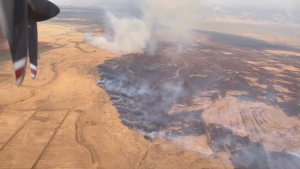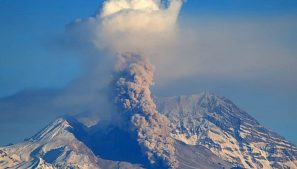Hawaii residents coping with Kilauea’s volcanic eruption faced a potentially deadly new hazard on Sunday as authorities warned that lava flows reaching the Pacific Ocean could produce noxious clouds of acid fumes, steam and tiny, glass-like particles.
Civil defense notices alerted motorists, boaters and beachgoers to beware of caustic plumes of “laze” formed from two streams of hot lava pouring into the sea after cutting across Highway 137 on the south coast of Hawaii’s Big Island late on Saturday and early Sunday.
The bulletins also warned that reports of toxic sulfur dioxide gas being vented from various points around the volcano had tripled, urging residents to “take action necessary to limit further exposure.”
Laze – a term combining the words “lava” and haze” – is a mix of hydrochloric acid fumes, steam and fine volcanic glass specks created when erupting lava, which can reach 2,000 degrees Fahrenheit (1,093 degrees Celsius), reacts with sea water, Hawaii County Civil Defense said in a statement.
“Be aware of the laze hazard and stay away from any ocean plume,” the agency said, warning that potential hazards include lung damage.
Under Sunday’s conditions, with strong winds and copious amounts of lava hitting the ocean, the laze plumes could extend as far as 15 miles (24 km), mostly along the coast and offshore, though the hazard would diminish the farther out to sea it blows, according to USGS geologist Janet Babb.
Laze killed two people when a lava flow reached the coast in2000, and even a wisp can cause eye and respiratory irritation, the US Geological Survey said. Acid rain from laze has corrosive properties equivalent to diluted battery acid, the agency said.
The section of coastal Highway 137 near a state park in the area where lava was pouring into the ocean has been closed, and another road in the vicinity was restricted to local traffic as a precaution.
An air quality index for Kona, about 40 miles (64 km)northwest of the eruption site, was at “orange” level, meaning that older individuals and those with lung problems could be affected.






